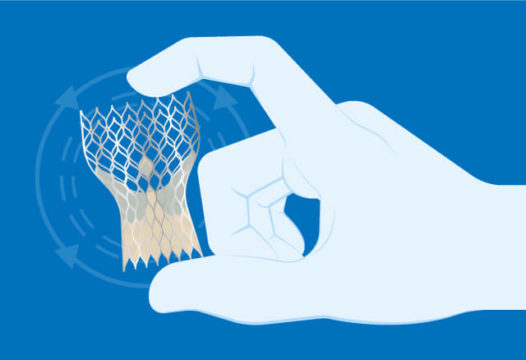The randomized controlled study SCOPE 1 failed to show significant differences at one year between the self-expandable Acurate neo and the balloon expandable Sapien 3.

The SCOPE 1 (Safety and Efficacy of the Symetis ACURATE neo/TF Compared to the Edwards SAPIEN 3 Bioprosthesis) compared the balloon expandable Sapien 3 (which has probably more data) against the Accurate neo in patients with severe symptomatic aortic stenosis and high surgical risk.
At 30 days, the new bioprosthesis failed to reach non-inferiority given the higher rate of periprosthetic aortic regurgitation and kidney failure. After one year, these outcomes might level off.
739 patients were randomized 1:1 to Acurate Neo (n=372) or Sapien 3 (n=367) between 2017 and 2019. Results at one year were available in 96.8% of the population.
All-cause mortality at one year resulted 10.9% with the self-expandable and 8.3% with the balloon expandable prosthesis (HR 1.31, CI 95% 0.81 to 2.10). Incapacitating stroke was 2.9% and 1.7%, respectively (HR 1.66, CI 95%, 0.60 to 4.57).
The combination of both end points did not result different between prostheses.
Read also: TCT 2020 | Acurate Neo Does Not Meet Non-Inferiority vs. CoreValve Evolut.
At one year, the rate of paravalvular leak moderate or severe (weak point in the Acurate) continued to be numerically superior, though with no statistical significance (8.9% vs 3.6%; p=0.07). On the other hand, transprosthetic gradients resulted lower with the Accurate neo (7.2 ± 3.3 vs 11.5 ± 5.4 mmHg; p<0.001).
One year mortality in the SCOPE 1 was within the range reported for intermediate risk population for the same generation devices. The trend towards higher mortality with the self-expandable valve could be partially driven by periprocedural events.
As regards paravalvular leak, we should take into account the weaker radial strength with the Acurate. This requires careful selection of device size (many in the Acurate branch received smaller prosthesis than ideally supposed to) and careful attention to calcification of the implantation site.
Read also: TCT 2019 | SCOPE I: Self-Expanding Valve Acurate Neo Head to Head with Sapien 3.
Lower transvalvular gradients are on the same line as all prostheses with supra-annular design.
These outcomes, and their limitations, are good news for the Acurate neo, which had suffered with the 30-day outcomes of SCOPE 1 (vs Sapien 3) and the 30-day and one year outcomes of SCOPE 2 (vs CoreValve).
Original title: One-Year Outcomes of a Randomized Trial Comparing a Self-Expanding With a Balloon- Expandable Transcatheter Aortic Valve.
Reference: Won-Keun Kim et al. Circulation. 2021;143:1267–1269. DOI: 10.1161/CIRCULATIONAHA.120.052251.
Subscribe to our weekly newsletter
Get the latest scientific articles on interventional cardiology





